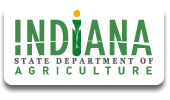About the Indiana Land Resources Council
The Indiana Land Resources Council (ILRC) was created in state law (I.C. 15-12-5) to assist local and state decision-makers with land use tools and policies. The ILRC is composed of representatives from county and municipal governments, home building and land development, business, environmental interests, soil and water conservation districts, and forestry, as well as a land use expert and a farmer. The ILRC’s mission is to evaluate all types of land use, not just agricultural land use. To read an in-depth article about about the Council and its work, click here.
Meetings
The Indiana Land Resources Council will meet on Wednesday, May 10, 2023 from 1-3 p.m. ET at the Indiana Farm Bureau office (225 S East St. Indianapolis, IN) on the 7th floor.
To see the agenda, click here.
Minutes
- November 2021
- June 2021
- March 2021
- November 2020
- August 2020
- November 2019
- July 2019
- April 2019
- February 2019
To view the minutes from previous meetings, click here.
Board Members
| Name | Representing |
| Richard Beck | County Government |
| Mayor Joshua Marsh | Municipal Government |
| Farm Owners | |
| David Kovich | Home Building and Development |
| Business | |
| Seth Harden | Environment |
| Kara Salazar | Academia |
| Jeff Healy | Soil and Water Conservation Districts |
| Jeff Page | Forestry |
Community Planning for Agriculture and Natural Resources
- To download the land use guide, please click here.
- For questions, please contact Katie Nelson kanelson@isda.in.gov.
Model Ordinances
The Indiana State Department of Agriculture and ILRC believe the model agricultural zoning ordinances are valuable to counties across the state as they make proactive decisions about land use. There are many different strategies to accommodate the land use needs of a community, and the best approach for each county is to tailor solutions to its unique characteristics.
- A Guide for Local Land Use Planning for Agricultural Operations - Updated November 2014
- Agriculture Zoning Tools
Since the ILRC finalized the recommendations for model agricultural zoning ordinances, several local governments have implemented these concepts. As the ILRC had hoped, these tools enable local government leaders to adapt the recommendations to their community needs. Click on the document below to see how ISDA has worked with the counties to advocate use of the model ordinance principles and advise on the legality of proposed regulations.
Planning for Agritourism: A Guide for Local Governments and Indiana Farmers
By combining agriculture and tourism, agritourism offers rural experiences to urban residents and economic diversification to farmers. Planning for agritourism requires a forward-thinking, locally-driven process. Planners must acknowledge agriculture as a land use and a business. The Indiana Land Resource Council (ILRC) designed this planning guide for agritourism providers, community leaders, extension agents, and rural economic development and tourism professionals.
Local Officials and Regulating Livestock Production
As an advisory body to state government, the Indiana Land Resources Council developed this guidance document to clarify the extent of local authority to regulate livestock operations. The purpose of this document is to aid state and local officials in understanding the roles and responsibilities of each unit of government in the regulation of livestock agriculture. It will first look at the specific powers granted to local units of government under the state’s land-use policies and then analyze the areas where state agencies have preemptive authority.
A Cost of Community Services Study for Indiana Counties and School Corporations
Cost of Community Services (COCS) studies are a case study approach used to determine the fiscal contribution of existing land uses on local government budgets. These studies do not prescribe a course of action, but simply provide an assessment of a community’s fiscal situation with regard to different types of land use. COCS studies are a snapshot in time of costs versus revenues for each type of land use. They provide a baseline of current information to help local officials and citizens make informed land use and policy decisions. COCS studies are helpful in understanding the relationships between residential and commercial growth, agricultural land use and the community’s bottom line. This data is critical when planning for the future balance and placement of growth in a community.
- A Cost of Community Services Study for Indiana Counties and School Corporations
- Cost of Community Services Brochure
- Cost of Community Services Final Statement
